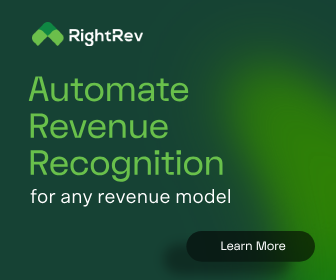Digital transformation is one of those terms that means a lot of things to a lot of people. Often dismissed as jargon, there are in fact ways to approach it successfully and with minimal pain. Driven by the evolution of technology and newfound ease of use when it comes to such technology, finance leaders are seeing more opportunity with less risk.
This according to a recent CFO article asking finance leaders to rethink of digital transformation as modular and nimble, author Kevin Herr notes that CFOs must adopt a frame of mind free of historical baggage and more attuned to what’s possible in today’s cloud-based world.
Three Tips to Approach a Digital Transformation
In this article, Herr looks at the reason projects fail and the possibilities that projects may offer, providing tips on how to avoid becoming a statistic. Though there are many approaches, Herr highlights the following as best practices.
1) Work Backwards—Step-by-Step, Not All at Once
Vision matters, and for a finance leader, taking on a mentality that looks at the goal before developing the steps might help. Though this vision may vary from organization to organization, Herr notes that successful digital transformations start with a clearly articulated vision of the result, highlighting the following examples of goals:
- Improve a business process. An automated procure-to-pay process with no manual data entry.
- Increase productivity. A seamless lead-to-cash progression for an accelerated sales cycle.
- Change a business model. A connected customer experience from support tickets to automated marketing campaigns.
From the initial vision, the next step is to break this down into manageable chunks, setting priorities and expanding on the step-by-step priorities.
This is where modularity comes into play. Digital Transformation is meant to build on itself, and too often, trying to achieve everything at once creates huge risk.
“Sequencing a digital transformation project with specific objectives and goals substantially improves success by allowing for precise alignment and focused effort. Teams learn from early wins, build confidence, and increase their probability of success for follow-on projects.”
2) Think Nimbly
Noting the power of the sequenced approach, Herr looks at how technology today makes this possible.
“Twenty years ago, a big-bang on-premises ERP solution would take years to implement and millions in investment, only to deliver mixed results. […] Today, incremental technology improvements that focus on achieving a single priority result, along with a clear roadmap for updating the technology stack to cloud-native applications, significantly reduces risk and investment.”
3) Building from the Ground Up
Beyond this, many of the biggest successes require leaders to start small. This means starting with the low-level tasks—transactions, approvals, and other time-consuming processes, using the extra time to grow the benefits. In this, he looks at three areas to begin focusing on.
- Transactions: Technology has improved tremendously over the past few years to accommodate the efficient ingestion of content from any source. Today, finance departments have the ability to digitally take in invoices, bills, and sales contracts from any device or application. Things like optical character recognition and a well-defined taxonomy can set up other applications like analytics to get more from processes.
- Centralized Approvals: New tools are available that help visualize, design, and set workflow and approval processes. The development of transparent and organized workflows means that transactions are treated consistently based on centrally defined rules and exception handling.
- Process Automation: With standardized transactions and consistent workflows in place, modern robotic process automation (RPA) eliminates manual and repetitive data entry to allow for greater productivity, speed, and accuracy.
Learn More: Accounting Robots
With remote workforces, Finance Automation has never been a hotter topic. Join our panel of experts to learn tips and best practices for the accounting and finance organization. Panelists include Chris Siegfried, CFO, Armanino LLP, Christopher Wetmore, Principal of the RSM Technology Advisory Practice, and Nick Ezzo, VP Marketing of Auditoria.AI, a leading Artificial Intelligence (AI) and SaaS automation company. Click here to watch this on demand.




